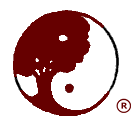|
|

 The Value of Jin Shin Do® for Acupuncturistsby Kamala Quale, M.S.O.M., L.Ac. (From the 2015 Acupressure News)
During my first year in acupuncture school, I remember how lucky I felt to know Jin Shin Do®
acupressure. I was hearing about the theory of Chinese medicine and the meridians for the
second time around, not the first. It felt like this second hearing was adding to the tapestry which
was already woven in my psyche and in my hands. When the Extraordinary Meridians, or Strange
Flows (as we call them in Jin Shin Do®) were introduced, I found that I knew a lot more about
them than most of my colleagues.
When it came to point location, I was already familiar with so many of the acu-points. I also had the knowing of how to find the points, along with the correct angle of pressure, in my fingertips. Many others did not. I was shocked at first to learn that most points were located by measuring, and then a needle was placed without any palpation taking place.I thought, “How do they know they are on the right spot?” Acupuncture school was more”“hands-off” than I had realized. Palpation [examining the body through touch] is one of the primary assessment tools in Chinese medicine, but this method of assessment is often limited to pulse-reading by acupuncturists. Jin Shin Do® practitioners use not only the pulse, but also palpation of tight local points in each of the “segments” of the torso, as well as palpation of deficient points. The way that touch is used during Jin Shin Do sessions expands this important assessment tool. For me, this grounds assessment theory so that it is not only in the head. Imbalances of the Qi (energy) show up in a very individualized way in the client’s body. In recent years, much more palpation of body points has come into the practice of acupuncture. Two very prominent teachers come to mind, namely the Japanese acupuncturist Kiiko Matsumoto, and Richard Tan with his Balance Method. They both rely heavily on palpation to determine where to place needles. People who practice “sports medicine” acupuncture also use more palpation. I find it invaluable to use palpation to determine where to needle, and also to use JSD methods once I have placed the needles. Often I place the needles and then sit at the person’s head and do the Basic Jin Shin Do® Neck-Shoulder Release. This helps my client relax and gives me the opportunity to suggest appropriate internal exercises—Qigong breathing and/or imagery—to bring a deeper sense of presence to a session. Or, I put needles in distal points and then use Jin Shin Do hands-on techniques in the area of focus, along with the Body Focusing Technique and other mindfulness-based methods, to turn the client’s awareness towards their present experience. This internal movement towards present experience is the secret to helping clients identify patterns of psychological and emotional stress that impact health. Jin Shin Do® theory includes correlation of the body and psyche in each of the body segments and in the 5-Elements based “Emotional Kaleidoscope.” This gives the practitioner maps that are very useful when emotions arise during a session. For acupuncturists who are interested in working with the dynamic interaction of mind and body during a treatment, the Body Focusing Technique is a great start. The body often remembers what the conscious mind has forgotten, so this work can bring unconscious patterns to the light of awareness where they can be re- evaluated and changed. This area of JSD has blossomed over the years. In her Module IV classes, Iona Marsaa Teeguarden (who is a licensed psychotherapist) teaches Bodymind Trancework, body-oriented trauma work, and use of the Emotional Kaleidoscope and Redecision Therapy to help heal the wounds of abuse. Many Authorized Jin Shin Do® Teachers, including myself, have integrated various Western psychological methods into their work. In summary, I would say that training in Jin Shin Do® Bodymind Acupressure® can add an important dimension to acupuncture practice. It brings a different sense of presence and connection to a session, and it becomes a specialty that clients come back for. Kamala Quale of Eugene, Oregon is a licensed acupuncturist, Senior Authorized Jin Shin Do® Teacher, and Certified Hakomi Somatic Therapist. For info about her upcoming classes, visit her website: www.moonandlotus.com. Copyright © 1999 - 2013 Jin Shin Do® Foundation. All rights reserved. |
|